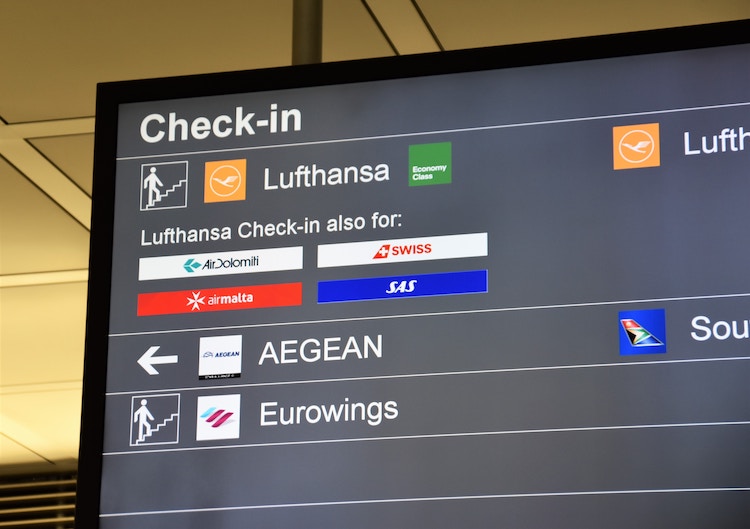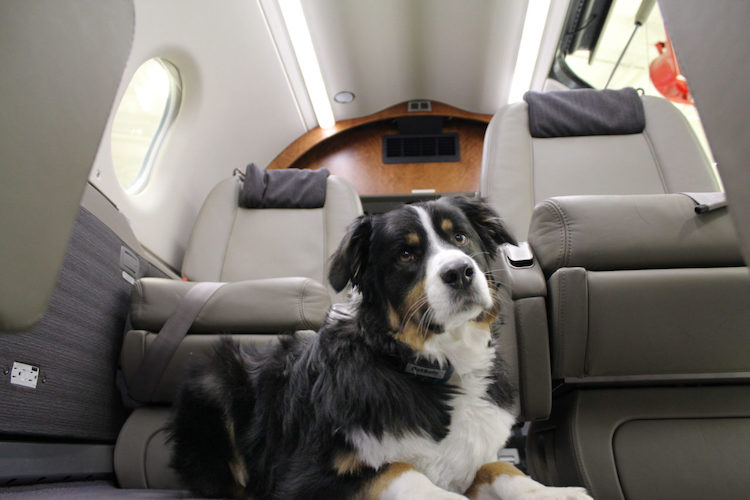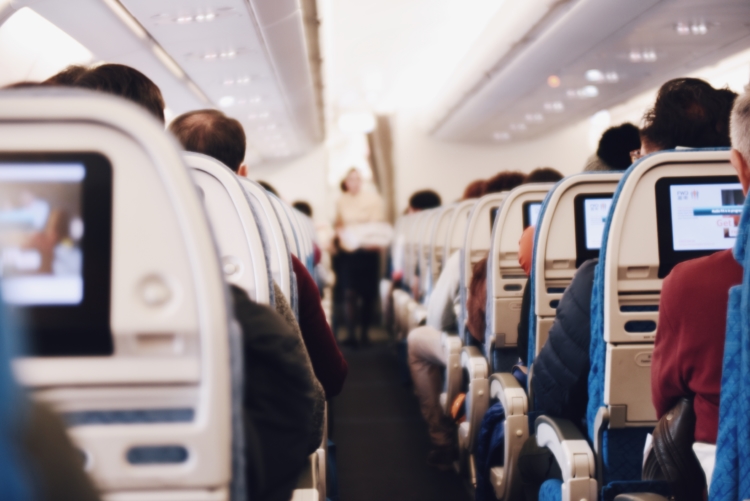On December 2, 2020, the U.S. Department of Transportation announced new rules that gave airlines the option to no longer recognize emotional support animals. As a result, U.S. airlines have stopped accepting emotional support animals on flights as of March 2021.
Psychiatric service dogs (PSD) are still allowed to board flights free of charge and are exempt from size, breed, and weight restrictions. PSDs essentially have the same rights that emotional support animals formerly did. If you are flying with a psychiatric service dog, you must follow the airline’s procedures and submit a special form before boarding your flight.
If you own an emotional support animal, it may be possible to train your ESA to become a psychiatric service dog if certain conditions are met. If you’re interested in seeing if you have a qualifying condition for owning a psychiatric service dog, ESA Doctors can connect you to a licensed healthcare professional that can assess you for a PSD letter.
Good News! All airlines still accept Psychiatric Service Dogs on all flights.
If you are interested in a Psychiatric Service Dog Letter, we are happy to connect you with a licensed healthcare provider so they may assist you.
Get your Psychiatric Service Dog Letter Now
IMPORTANT NOTICE: The information below summarizes the U.S. Department of Transportation’s guidelines for emotional support animals from 2019. These rules are no longer in effect, and emotional support animals are no longer permitted on U.S. flights.
The information below is retained for historical purposes only. Please click on the links in the paragraphs above for summaries on the DOT’s latest rules and procedures for flying with assistance animals.
Summary of Airline ESA Guidance
1. 48 Hour Advance Notice

- Airlines may require ESA owners to provide up to 48 hours advance notice of flying with an ESA, and may also require handlers to appear in the lobby for processing of ESA documentation up to one hour prior to the check-in time for the general public. Service dog handlers are exempt from this policy.
- It’s good practice for ESA owners to notify their airlines at least 48 hours before their flight, so they do not run into any last-minute surprises.
2. Airlines are required to accept your ESA Letter

- American Airlines and other airlines can no longer deny your ESA letter and require their own form to be used instead. Airlines may not reject documentation provided by an ESA handler from a licensed mental health professional that meets all of the criteria under the ACAA.
- Airlines may ask ESA handlers to present additional documentation related to the animal’s vaccination, training, or behavior.
- If you need an airline-approved ESA letter, you may request this from your therapist. If you do not have a therapist, you can reach out to ESA Doctors for support. They will help pair you with a compassionate Licensed Mental Health Professional who understands the regulations regarding ESAs, including the Air Carrier Access Act, and the importance of ESAs.
3. Dogs, Cats, and Mini-horses are allowed

- Airlines are required to accept your Emotional Support Animal if the animal is a dog, cat or miniature horse.
- Airlines can deny transport to unusual animals including snakes, other reptiles, ferrets, rodents and spiders. However, airlines cannot categorically refuse to transport other animals or species of animals.
4. Multiple Emotional Support Animals

- The DOT has stated that it is focusing its efforts on ensuring that airlines are not restricting passengers from traveling with one ESA and a total of three service animals if needed.
- Airlines may not impose categorical restrictions on the total number of service animals to be transported in the aircraft cabin. This means that if ten qualified individuals with a disability each need to bring an ESA, then the airline must accept all ten ESAs, so long as the ESAs are sufficiently trained to behave in a public setting.
5. Lobby Verification

- Airlines can require passengers with ESAs to present documentation in the lobby/ticket counter area, rather than the gate/sterile area.
6. Containment of ESAs on Flights

- Airlines may impose reasonable and appropriate restrictions to control the movement of ESAs in the cabin.
- Such restrictions may include requiring, where appropriate for the animal’s size, that the animal be placed in a pet carrier, the animal stay on the floor at the passenger’s feet, or requiring the animal to be on a leash or tether.
- The DOT will consider containment issues for ESAs on a case-by-case basis, with a focus on reasonableness. Factors include the size and species of the animal, the right of other passengers to enjoy their own foot space, and the continued ability of the animal to provide emotional support while being restrained or kept in a pet carrier.
7. Flight Length Restriction

- Airlines may not categorically restrict ESAs on flights scheduled to last 8 hours or more. On flights scheduled to last 8 hours or more, airlines may ask for 48 hours’ advance notice, early check-in, and documentation that the ESA will not need to relieve itself on the flight or that it can do so in a way that does not create a health or sanitation issue on the flight.
8. No Breed Bans, this means pit bulls too!

- Airlines cannot ban an animal solely because it is a certain breed (including pit bulls).
- Airlines are allowed to deny transport to an animal if, among other things, it poses a direct threat to the health or safety of others. However, the DOT has stated that there is no evidence that an animal poses a threat simply because of its breed.
9. No Categorical Weight Limitations for your ESA

- Airlines may not impose a categorical restriction on ESAs over a certain weight. For example, one airline recently banned all ESAs over 65 pounds, but such a ban is no longer allowed.
- The ACAA does allow airlines to determine “whether the animal is too large or too heavy to be accommodated in the cabin….” Under this rule, an animal may be excluded from the cabin if it is too large or too heavy to be accommodated in the aircraft. However, categorical weight bans are not allowed.
Department of Transportation Defends ESA Rights for Travelers
The DOT’s statement gives much-needed guidance on the ability of passengers to fly with their ESAs. The new guidance affirms and clarifies certain rights that ESA owners have. Flying with your ESA on any airline is free of charge if you qualify for an ESA letter. You are required to be a responsible ESA handler and give the airline advanced notice. If you feel that you have mental health or emotional issue that would benefit from your pet’s love and support and are interested in seeing if you qualify for an ESA letter, ESADoctors.com can be a wonderful resource for you.
Need a Legitimate ESA Letter to Fly?
Get the Love and Support you deserve!









Everyone knows the difference in a true service dog/animal and an “emotional support” animal. This is a bunch of “safe space” garbage. My daughter was attacked and severely injured by a Large breed family (not ours) pet- and there is no way that she or myself could get on a plane with a pit bull or any other big aggressive breed that is on most insurance and banned breed lists. Anyone who truly needs a service dog can choose a different breed. If they ONLY way you can get on a plane is with a miniature horse then you should buy a miniature saddle or drive. This need to force others to conform to our selfish demands, habits and beliefs is what is wrong with our society. I guess people who consider the needs of others need to ask our doctors about documentation to keep us safe from this kind of nonsense. Maybe being considerate, having manners, and civility is a disability now.
First, we are truly sorry about what happened to your daughter – it is unfortunate that there are owners who cannot control their dogs which give a bad reputation to the vast majority of responsible owners. Our view is that it is the sign of an enlightened society that we have federal laws that allow the mentally and emotionally disabled to live normal lives with the help of emotional support animals. ESA owners are always responsible if their pets cause injury or damage. It is a difficult thing to reach out for help, and a legitimate ESA owner will have been evaluated by a licensed mental health professional to see if an ESA would help with their condition. The Department of Transportation and the Department of Housing disallow discrimination based on breed – that would be unfair to the majority of responsible dog owners, and discriminate against dogs that are vital to a person’s health and have no behavioral issues, but just happen to be a particular breed.
Why do the rights of a few emotionally disturbed people overrule the rights of everyone else around them?
He should someone who is very allergic to dog hair have to be the one to get put off the plane instead of the emotionally disturbed individual who says he/she requires an ESA.
The letters required for an ESA are a joke, anyone can simply go online and find a quack that will write them one for a charge without even personally examining and evaluating the patient.
It is not a joke to want the disabled to be able to enjoy daily life the same way the non-disabled do. The issue is so important we have enshrined ESA rights into federal law. The process to get an ESA letter is also not a joke. First, it takes courage to seek help for mental and emotional disorders. Second, the patient must be evaluated by a qualified mental health professional that is properly licensed. Only upon the LMHP’s professional recommendation can a patient receive an ESA letter. There may be scam sites that circumvent this, but ESA Doctors makes sure to adhere to the highest professional standards. Remote consultations are also vital for individuals who do not have the financial means or ability to see a therapist in person. In the overwhelming majority of times, ESAs board flights without creating any issues for other passengers. You have probably flown without even realizing an ESA was on board the entire time.
Airline policies state that if you have an allergy, they will move you if you
request it.
I have a 5 pound Maltese who is a hearing alert animal. When our family has the need to fly in a plane, we do so with her in my lap. However, given the reputation of the Bully breed mixed and/or pure my family and I will NOT travel along side these animals, service or not. There are plenty other breeds out there to choose from for an ESA. Period. People use these animals for intimidation purposes. They do not need to be ESA dogs.😡
We believe it is unfair to judge any dog solely because it is a certain breed. The Department of Housing and Department of Transportation feel similarly, and prohibit categorical restrictions on breeds. Pit bulls can make wonderful pets and ESAs, we know many ESA owners who have well-behaved pit bulls that provide invaluable support, and it is unfortunate that a few bad owners taint their image.
You don’t have to sit by a bully breed, you don’t have to talk to the owner, you don’t even have to look at their dog. We transport pets all across this planet (so many bullies that I can’t begin to count) many from rescues, shelters, picked up from airports where are complete strangers….since we began moving pets in 2014, the one and only dog to ever growl and try to bite us was a maltese mix.
I don’t understand why there is a weight limit or if the dog is touching the seat is a problem. Many times the person beside you takes up 1/4 of the seat you paid for.
All the airlines are requiring esa provider fill out their specific form. Why would they accept a letter from an online ESA company? Are you able to actually complete one of the specific airline forms?
The DOT has stated that airlines must accept ESA letters, but many airlines are still requiring their specific form to be filled out which is why we offer extra document services. The LMHPs we work with can help you if you need specific airline forms filled in.
It looks like many airlines still have their own “mental health forms” up on their websites, even though the new guidelines say they cannot require passengers to use those forms. This seems like intimidation. Does anyone have any experience successfully NOT submitting an airline’s mental health form? Or explaining to an uninformed desk agent that an original ESA letter shall suffice? I’m curious to know how this is playing out.
You are correct, the Department of Transportation has issued guidance that airlines must accept valid ESA letters instead of insisting on their own form. See here for more information: https://esadoctors.com/new-airline-rules-emotional-support-animals/
It may take some time for airlines to catch up with these new requirements. If you encounter an uninformed desk agent, it is sometimes helpful to request a supervisor that may be more up to date on ESA rules.
If you have an issue at the ticket counter, you’re supposed to ask for a particular person, I cant think of their title, it’s on like Delta, American…It says this person is specifically qualified to help you.
This is beyond ridiculous. Any person that wants to pay a doctor can get a note to take their pets on a plane. What about the rights of the other 200 people on the plane. What about the people who are afraid of dogs? What about the people who are allergic to dog hair? If someone is allergic to peanuts, they don’t serve them on the plane. Service dogs are necessary.
It is a myth that you can just pay a doctor to take a pet on a plane. While there may be unscrupulous providers that just sell letters, a reputable provider will ensure the patient is assessed by a licensed mental health professional before making the recommendation for an ESA. ESAs, like service dogs, allow people to participate fully in activities that the non-disabled can participate in. If someone is afraid of dogs or has allergies, they can be moved to another seat, but that is not a good reason we should deny flying to the disabled.
i just dont understand how medium size dog like my boxer 70lbs can fit under the seat? i also read somewhere that animals are not allowed to touch seats! why is it a problem if my dog will try to cuddle or kiss me and puts her legs on the seat. How does it work on international flights where it needs to be 10h aprox?
Please see our recent article for what the DOT has stated regarding containment of ESAs on flights: https://esadoctors.com/new-airline-rules-emotional-support-animals/